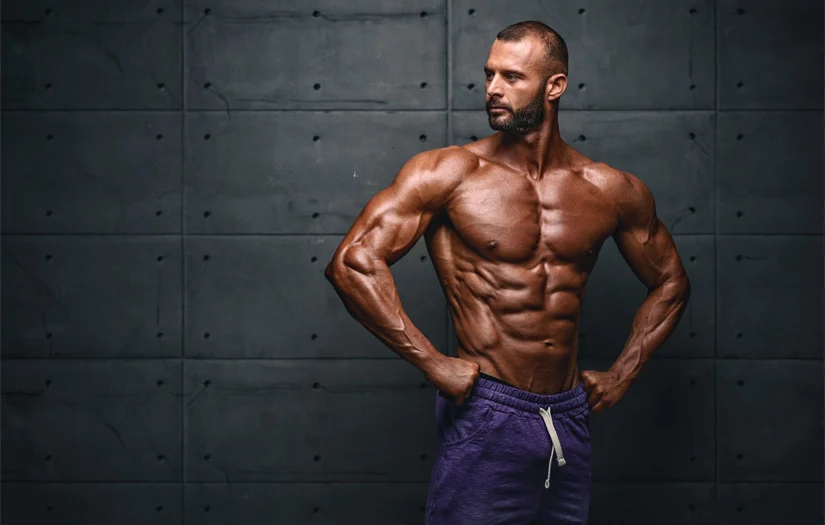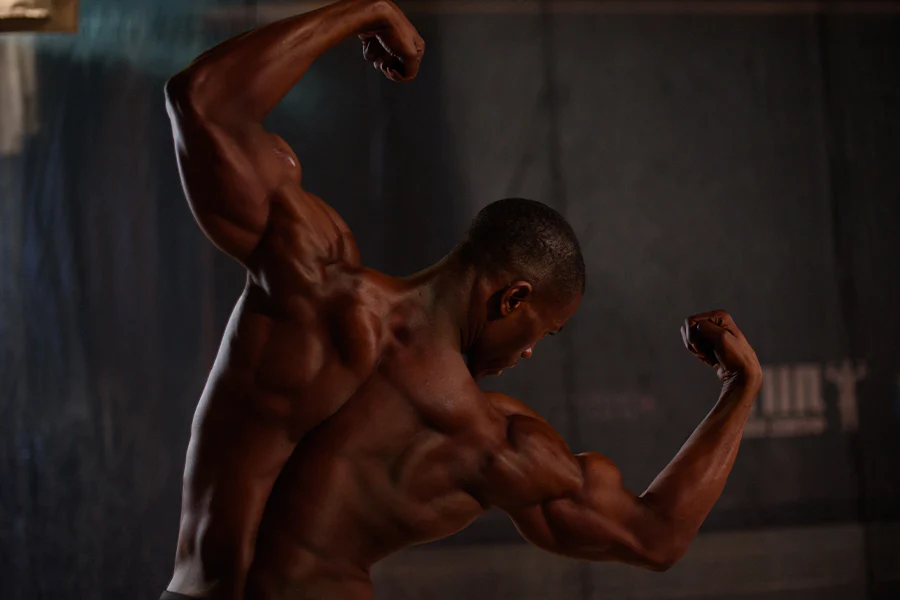Over the years, the changes in bodybuilding judging criteria for judging bodybuilding competitions have evolved, reflecting the changing trends and expectations of both the sport and its audience.
In this article, we will dive deep into the latest trends in bodybuilding judging, exploring what judges look for today. From the classic aesthetics of the golden era to the modern emphasis on size and conditioning, we will dissect the key factors that determine success on the bodybuilding stage. Get ready to unveil the secrets behind the judging process and gain valuable insights into how competitors can stand out in an increasingly competitive industry.
Whether you are a seasoned bodybuilder, an aspiring competitor, or simply fascinated by the world of fitness, this article will provide you with a comprehensive understanding of the ever-evolving standards in bodybuilding judging.
Let’s explore the fascinating world of bodybuilding and discover what it takes to impress the judges in today’s highly competitive landscape.
Evolution: Changes in Bodybuilding Judging Criteria
Bodybuilding competitions have come a long way since their inception. In the early days, bodybuilding was primarily focused on aesthetics, with judges looking for a symmetrical and proportionate physique. However, as the sport gained popularity, the criteria for judging began to shift. The golden era of bodybuilding, characterized by the likes of Arnold Schwarzenegger and Frank Zane, placed a heavy emphasis on classic aesthetics.
Judges sought out competitors with well-defined muscles, a small waist, and a V-tapered upper body. However, as bodybuilding entered the modern era, the focus shifted towards size and conditioning. The rise of mass monsters like Ronnie Coleman and Dorian Yates marked a new era in bodybuilding judging, where sheer muscle mass and extreme muscularity became the ultimate goal.
Today, bodybuilding judging combines elements from both the golden era and the mass monster era, creating a unique set of criteria that judges use to evaluate competitors.

Current Trends in Bodybuilding Judging
In today’s bodybuilding scene, judges are looking for a combination of factors that showcase the overall physique of the competitors. While muscularity and definition remain the primary focus, other aspects such as symmetry, proportionality, presentation, and posing play a crucial role in determining the winner. Let’s take a closer look at each of these trends.
- Muscularity and Definition – The Primary Focus
Muscularity and definition continue to be the foundation of bodybuilding judging. Judges are looking for competitors with well-developed muscles that display separation and striations. Muscles should be full, round, and well-detailed, with a balance between size and definition. Competitors with a high degree of muscularity, particularly in the major muscle groups like the chest, back, shoulders, and legs, are more likely to catch the judges’ attention. However, it is essential to note that judges are not only looking for size but also the quality of the muscles. A competitor with well-defined muscles and a sculpted physique will always have an advantage over someone who is simply big but lacks the necessary definition.
- Symmetry and Proportionality – The Importance of Balance
While muscularity is important, it must be complemented by symmetry and proportionality. Judges are looking for a well-balanced physique where each muscle group complements the others. The ideal bodybuilder should have a small waist, wide shoulders, and a tapered back, creating the coveted V-tapered shape. Symmetry is not limited to the upper body; it extends to the lower body as well, with well-developed quads, hamstrings, and calves. Competitors who exhibit exceptional symmetry and proportionality are likely to score higher in the judging process.
- Presentation and Posing – The Art of Showcasing the Physique
Presentation and posing are often overlooked but play a crucial role in bodybuilding judging. Competitors must know how to present their physique in the most flattering way possible. Judges are looking for confidence, grace, and the ability to showcase the muscles effectively. Each pose should highlight the competitor’s strengths while minimizing any weaknesses. The transitions between poses should be seamless, and the overall routine should be well-choreographed. Presentation and posing are where competitors have the opportunity to bring their personality to the stage and leave a lasting impression on the judges.
- Conditioning and Vascularity – The Finishing Touches
In addition to muscularity, judges are also paying close attention to the conditioning and vascularity of the competitors. Conditioning refers to the level of body fat and the visibility of muscle striations. Competitors with low body fat levels and well-defined muscle striations are more likely to score higher in this aspect of judging. Vascularity, on the other hand, refers to the visibility of veins. While not as crucial as muscularity and conditioning, a certain level of vascularity can add an extra element of detail and separation to the physique, further impressing the judges.
- Importance of Stage Presence and Confidence
Beyond the physical attributes, judges also take into account the competitor’s stage presence and confidence. Competitors who exude confidence, charisma, and command the stage with their presence are more likely to leave a lasting impression on the judges. Stage presence includes factors such as eye contact, facial expressions, and overall charisma. A competitor who can connect with the audience and the judges while maintaining a confident demeanor will have an advantage over someone who lacks stage presence.
Critiques and Controversies in Bodybuilding Judging
As with any sport, bodybuilding judging is not without its fair share of critiques and controversies. Some argue that the focus on extreme muscularity has led to a loss of the classic aesthetics that defined the golden era. Others believe that bodybuilding judging has become too subjective, with personal biases influencing the outcome of competitions. Additionally, there is ongoing debate regarding the use of performance-enhancing substances and their impact on bodybuilding judging. These critiques and controversies highlight the need for continuous evaluation and evolution of the judging criteria to ensure fairness and maintain the integrity of the sport.

Future Directions in Bodybuilding Judging
Bodybuilding judging has evolved over time, and it is likely to continue to evolve in the future. Some of the potential future directions in bodybuilding judging include:
- A greater focus on symmetry and proportion. In recent years, there has been a trend towards bodybuilders who are more symmetrical and proportionate. This is likely to continue in the future, as judges look for bodybuilders who have well-developed muscles that are balanced and harmonious.
- A greater emphasis on athleticism. Bodybuilding is a sport, and as such, it is important that bodybuilders demonstrate athleticism. This could mean judging bodybuilders on their ability to perform certain exercises, such as the squat or deadlift. It could also mean judging bodybuilders on their overall level of fitness and athleticism.
- A more holistic approach to judging. In the past, bodybuilding judging has focused primarily on the physical appearance of the bodybuilder. However, there is a growing movement to take a more holistic approach to judging, which would consider factors such as the bodybuilder’s health, their mental toughness, and their overall presentation.
- The use of new technologies. New technologies, such as 3D scanning and computer analysis, could be used to help judges assess the physiques of bodybuilders. This could lead to a more objective and accurate system of judging.
It is impossible to say for sure what the future holds for bodybuilding judging. However, the sport is constantly evolving, and it is likely that judging will continue to evolve along with it.
In addition to the above, here are some other potential future directions in bodybuilding judging:
- A greater focus on diversity. Bodybuilding is a sport that has traditionally been dominated by white men. However, there is a growing movement to increase diversity in the sport. This could mean judging bodybuilders of all races, ethnicities, and genders.
- A focus on health and safety. Bodybuilding can be a dangerous sport, and there have been a number of high-profile deaths of bodybuilders in recent years. In the future, judges may be more likely to disqualify bodybuilders who are at risk of injury or death.
- A focus on sustainability. The bodybuilding industry is a major contributor to climate change. In the future, judges may be more likely to reward bodybuilders who use sustainable practices, such as using organic supplements and practicing ethical sourcing of animal products.
The future of bodybuilding judging is uncertain, but it is clear that the sport is undergoing a period of change. The directions outlined above are just a few of the possibilities that could shape the future of bodybuilding judging. Only time will tell what the future holds for this exciting sport.
Let’s Sum Up
Bodybuilding judging has come a long way, reflecting the changing trends and expectations of the sport. Today, the criteria for judging combine elements from the golden era and the mass monster era, resulting in a unique set of standards that determine success on the bodybuilding stage. Muscularity, definition, symmetry, presentation, and conditioning all play a vital role in impressing the judges. However, it is important to remember that bodybuilding is not just about the physical attributes; stage presence, confidence, and overall presentation are equally crucial.
As the sport continues to evolve, so too must the judging criteria. By staying attuned to the latest trends and continuously striving for improvement, competitors can stand out in an increasingly competitive industry. Whether you are a seasoned bodybuilder or simply fascinated by the world of fitness, understanding the ever-evolving standards in bodybuilding judging will provide valuable insights into what it takes to succeed on the bodybuilding stage.
You May Also Like
- Targeting Your Triceps: Effective Tricep Extension Exercises for Arm Development
- Isolation Exercises vs. Compound Exercises: Which is Right for You?
- Optimizing Macronutrient Ratios for Muscle Gain, Fat Loss, and Performance
- Entering the World of Amateur Bodybuilding Competitions: What You Need to Know



